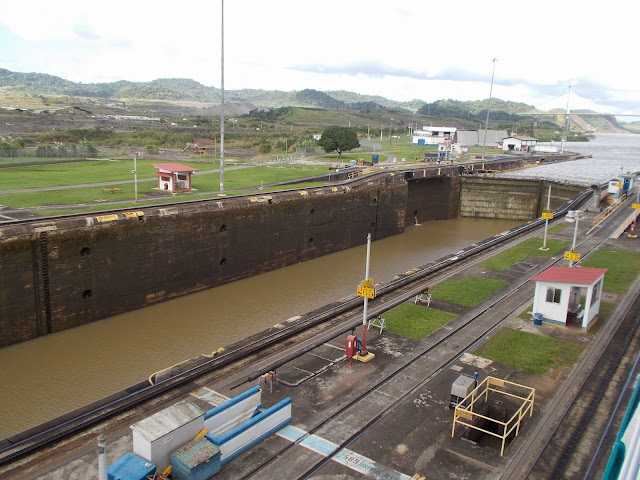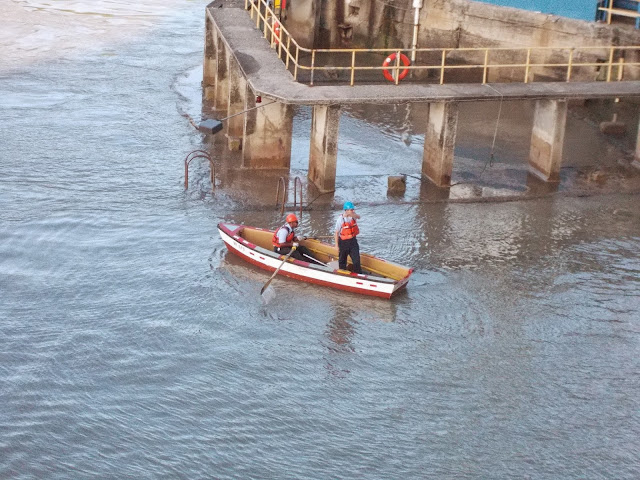Why Not Visit. . . the Panama Canal?
Last autumn I sailed through the Panama Canal. Well I didn't do any sailing, more like paying money and going along for the ride. I went on a cruise through the canal. The entire trip from one end of the canal to the other took about 12 hours, which is expedited as passenger and military ships receive priority to pass through the canal. Indeed as we sailed through Gatun Lake, the largest part of the canal, I saw ships idling in the distance waiting for their turn to pass through the locks.
 |
| A view from the deck of one ship in a lock overlooking the adjacent lock. |
Our journey through the canal began with entering the first lock. Navigating such large vessels into the locks is a coordinated ballet of workers both on land and on the ship. Many cruise ships cannot fit into the locks, and our had just a foot of width to spare. To aide such large ships into the canal without them bumping into the walls of the canal, a guidance system has been incorporated into the locks. When our vessel first arrived at a lock, it was met by a rowboat with two men in it. The rowboat brought cables out the the ship which were attached at the four corners of the ship (aft port and starboard and forward port and starboard).
 |
| The row boat and men who brought the guidance cables to our ship. |
Video of a locomotive pulling the cable attached to the ship through the first lock.
Time lapse of the lock doors closing behind the ship. The video is at 8x speed.
Once the doors are sealed water is allowed to flow through tunnels from the upper lock or lake into the lowered lock. Water is not actively pumped, but rather flows by gravity from the higher elevation locks to the lower elevation locks. As water flowed into the lock where our ship was located, it began to rise. Initially the deck we were standing on was level with the ground adjacent to it. When the lock was filled with water, we were well above it.
Time lapse of the view from a banister as the ship rises when the lock fills with water. The video is at 8x speed.
After going through the third lock, our ship entered Gatun Lake. Gatun Lake is a an artificial lake in an area that was flooded to create a large canal. It contains several islands that were once mountain tops. When the valley flooded, animals that did not flee the valley entirely formed new ecosystems on the new islands. These newly evolved ecosystems are now the study of research scientists. The transit of the lake was about 8 hours long, and rather enjoyable. Usually unless a cruise ship is in port, there is not much to see in the distance except for ocean meeting the horizon. I have been on enough cruises that the ability to look over the banister and see land lush with rain forests was a welcome change in scenery.
 |
| A view of Gatun Lake from the bow of the ship. |
After the 8 hour canal transit, our ship exited through another set of three locks, bringing it and everyone on board back down to sea level. To pay for the canal Panama exercises taxes on ships that transit through the canal. For passenger ships, the tax is $200 a person, which is passed on to customers, making the transit itself a rather expensive shore excursion. Still it was an experience well worth the price.
No comments:
Post a Comment